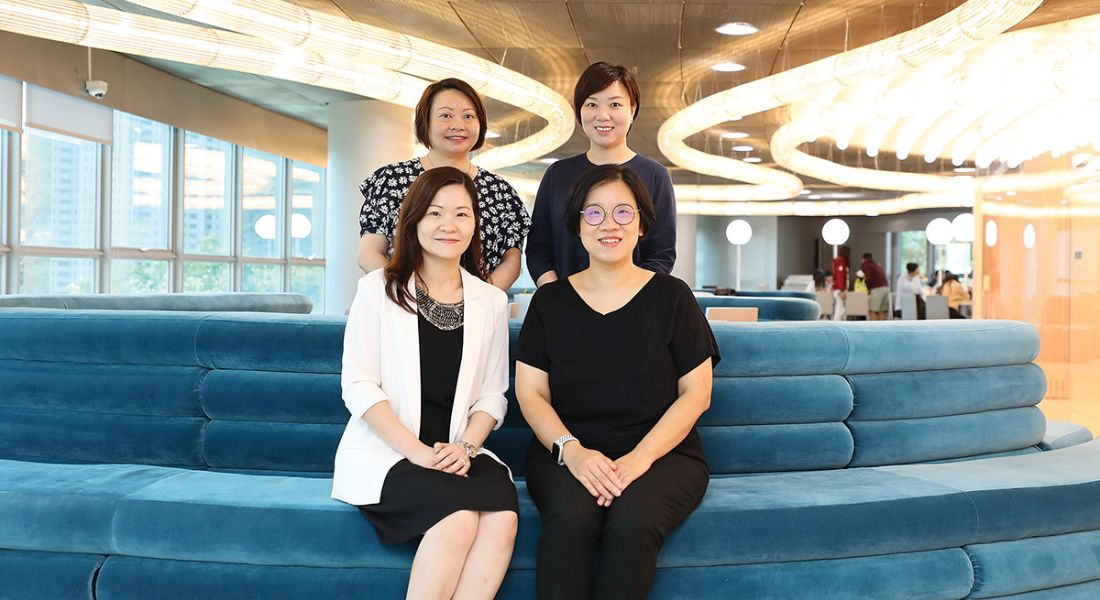Online Teaching in a Pandemic
Dr Maggie Chan | Lecturer
Ms Claudia Chan | Lecturer
Ms Michelle Pang | Lecturer
Professor Doris Yu | Professor
The lockdown due to the COVID-19 pandemic meant the University and the School of Nursing had to adapt rapidly to ensure students could learn at home. At the School, we adopted several teaching strategies for online learning that built on our past strengths and took us in new directions, such as Panopto that captures teachers’ lectures and the virtual classrooms of Zoom and Google Meet that allow for interactive learning when students and teacher are in different places.
In order to improve future online teaching and learning, we interviewed two students and two teachers for their reflections on the benefits and limitations of online learning and what could be done to improve the experience.
On benefits, the respondents highlighted the flexibility and innovativeness of online learning. Students said it allowed them to plan their study and revision schedule. One said: “I can revise the lectures when necessary so that I can make sure that I understand the content of the lecture.” Teachers also agreed that online teaching offers flexibility for students and believed that the use of innovative technology was welcomed by students.
However, there was a price to pay in terms of the lack of interaction and potential for poor understanding of the material. One student said, “I would like to go back to school.
I would be happy to see my classmates and teachers again and have lunch and chat together.” The lack of face-to-face communication means students miss out on important, joyful aspects of school life.
Students also found it difficult to understand nursing skills and techniques through online teaching and preferred face to-face teaching because they could demonstrate their skills and teachers could give direct comments on how to improve. In this way, face-to-face teaching is important to building trust relationships between students and teachers. Teachers also worried about students’ understanding. “I don’t know if they understand or not,” said one, because of the reduced face-to-face interactions.
These drawbacks suggest areas for improvement. One possibility is to shift in future to “blended learning” that combines online learning with face-to-face sessions. This would satisfy both the teachers’ aim of having a student-centered approach with more interactive and innovative elements, and student preference. “It will be perfect if we can learn with both online teaching and face-to-face lecture,” said one student. Another suggested: “I like scenario-based teaching; we can discuss the scenario and learn from others,” which raises the possibility of having scenario-based learning online.
“Blended learning” is not a new concept – in formal terms, it means combining internet and digital media with established classroom forms that require the physical co-presence of teacher and students (Friesen, 2012). The School was already moving in this direction before COVID-19 struck through the use of such “ed-tech” as videos, flipped classroom, Panopto, Moodle and VR technology to enhance students’ learning.
The real challenge is to figure out how to maximize the impact of blended learning in face-to-face teaching. Ongoing support is crucial for effective blended learning. It requires the development of curriculum models and frameworks, staff training, and resources and technologies to support and build an effective team. Student feedback is also important, so building partnerships with students should be considered.
The way to improve our teaching and student learning is to be willing to embrace change. There is now an opportunity for us to reform and reshape our pedagogy and develop a vibrant new environment for new-generation learners.
References
- Friesen, N. (2014). Report: Defining Blended Learning. 2012. DOI= http://learningspaces.org/papers/Defining_Blended_Learning_NF.pdf.
- HKU Teaching and Learning. (2018, March 23). Enhancing Student Learning With Blended Learning. E-Learning Blog. https://tl.hku.hk/2018/03/enhancing-student-learning-with-blended-learning/
Acknowledgments
Special thanks to teachers and students who were interviewed for this article:
Ms Zoe Ng, Lecturer
Ms Cecilia Sit, Lecturer
Mr Tsui Tze-long, Year 3 Bachelor of Nursing (Full-time) student
Mr Wong Tsz-nok, Year 2 Bachelor of Nursing (Full-time) student







